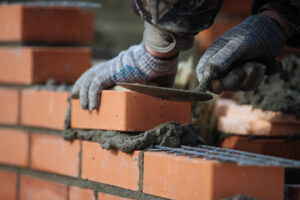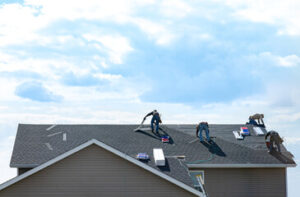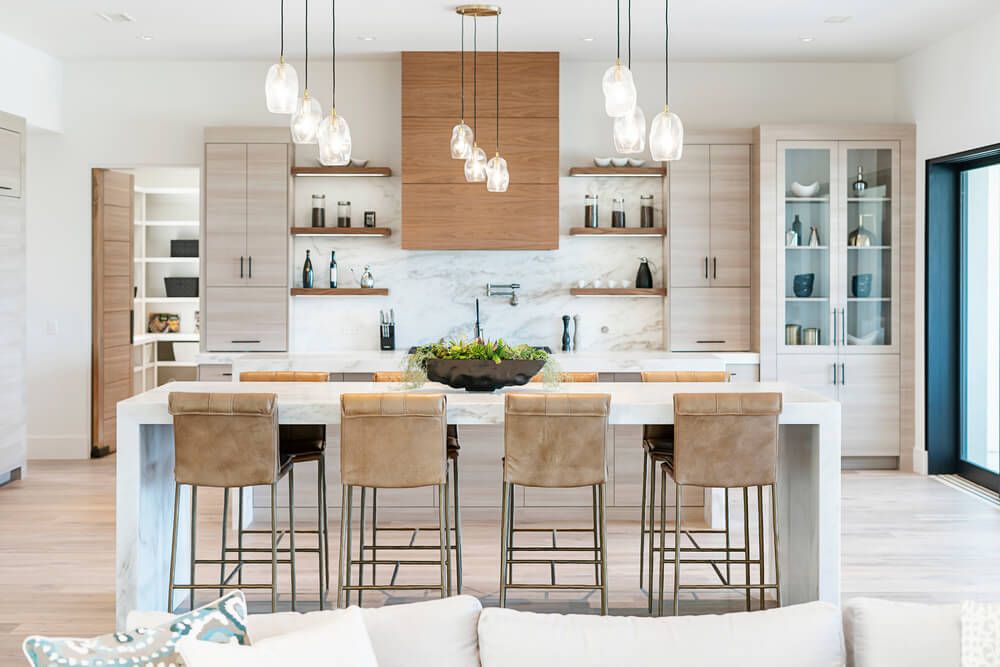Brick masons lay and bind building materials such as brick, stone, concrete block, cinder blocks or breezeblocks with mortar to construct walls and other structures. They also build brick arches and steel supports, known as lintels, at window and door openings.

Masonry is a physically demanding profession. Brick Mason Charleston SC needs physical stamina to endure long hours of labor and to lift heavy materials. They also need good hand-eye coordination and dexterity to handle tools.
Brick masons are responsible for constructing walls, chimneys, and other structures that require a strong foundation. They use a variety of construction materials to ensure their finished projects are structurally sound and aesthetically appealing. Masons are highly skilled tradespeople and are often able to advance into supervisory roles, which can lead to higher pay rates.
To perform their job duties, brick masons must have the physical stamina to lift heavy materials and endure long hours of labor. They must also have the ability to work outdoors in a range of weather conditions.
In addition to these physical requirements, brick masons must have the manual dexterity to operate a variety of tools and manipulate bricks with precision. They also need to have the math skills to accurately measure dimensions and calculate quantities of materials needed for each project.
Throughout the construction process, brick masons must remain vigilant and adhere to strict safety guidelines. They must also be able to work well with other members of a construction team and communicate effectively. Masons frequently collaborate with engineers, architects, and other members of a construction crew to complete complex building projects.
After laying the foundation for a structure, brick masons apply a layer of mortar to the surface before laying each brick. They must be careful to ensure that the mortar is evenly spread and adheres to the previous layer of bricks. This requires patience and attention to detail, as even a slight misalignment can impact the overall structural integrity of the structure.
Once the brick mason has applied the mortar, they begin laying each individual brick in the desired pattern. This step is time-consuming and requires a high level of precision. Masons must be able to read blueprints and construction plans in order to properly align the bricks and ensure that each structure is built to the correct specifications.
After gaining experience in the field, brick masons may choose to pursue certification. Two widely recognized credentials include the National Center for Construction Education and Research (NCCER) Certification and the Brick Industry Association (BIA) Certification. While not required for this profession, these credentials can help brick masons gain recognition and improve their career prospects.
Mathematical Skills
Brick masons use mathematical skills to interpret blueprints and construction plans and estimate the amount of materials needed for a project. This requires attention to detail, as even small errors can impact the structure’s integrity. They also need to be able to measure accurately and operate a variety of tools, including hammers, trowels, and levelers.
Masonry training typically begins with a high school diploma or GED certificate and enrollment in a vocational program. Students learn the basics of masonry work, including how to lay bricks and other types of building blocks, as well as how to use specialized tools like a brick hammer and chisel. Students also learn to mix mortar and read blueprints. Many vocational schools offer apprenticeship programs that allow students to gain hands-on experience in the field with a professional mason.
Once a brick mason has completed their education and training, they must pass an examination to receive their certification. Certification shows employers that the individual has a strong understanding of masonry work, and it can help them find employment opportunities. Two widely recognized certifications are the National Center for Construction Education and Research (NCCER) certification and the Brick Industry Association (BIA) certification.
After gaining some on-the-job experience, brick masons can begin taking on supervisory roles. This can lead to higher wages and a greater opportunity for career advancement. In addition to their base salary, brick masons may receive benefits like health insurance and retirement plans that can enhance their overall compensation package.
Brick masons need to have strong problem-solving skills to overcome the numerous challenges they encounter on a daily basis. This includes adjusting their plans when unforeseen obstacles arise on the job site and finding solutions to unexpected structural issues. They also must communicate effectively with other members of the construction team to ensure that everyone is on the same page. This can prevent misunderstandings and promote efficient teamwork, which helps ensure that projects are finished on time and to the highest standards.
Attention to Detail
Brickmasons must be able to follow exacting building specifications and quality standards. This requires them to take a very methodical approach to their work, carefully measuring and marking for accurate placements. It also means paying close attention to the details of each layer of mortar, ensuring that each brick is properly aligned with the previous one.
Strong problem-solving skills are important for brick masons because construction projects often encounter challenges and unexpected obstacles. They need to be able to think quickly on their feet and find solutions, ensuring that they meet the demands of each project while maintaining their high quality standards.
Many brick masons find that their job satisfaction increases with their ability to build and repair structures using masonry materials. The career also offers a great sense of accomplishment, especially for those who advance in their careers and move into supervisory or management positions. Masons are generally able to find employment in areas with rapid construction growth, which can increase salaries and job opportunities.
The Myers Briggs personality type ISTP (also known as the “artisan”) is often found in brick mason roles, as these individuals tend to be highly attentive to detail, independent, and adaptable, which are key qualities for the career. However, brick masons should also be able to collaborate with others effectively, which can be challenging for some.
As they build their career in the field, brick masons learn how to perform their duties with a wide range of tools and equipment, including air hammers, earth tampers, cement mixers, small mechanical hoists, surveying and measuring equipment, and more. They also need to be able to operate each piece of machinery safely and efficiently.
Brick masons may also be responsible for repairing and restoring existing brickwork, which can include removing and replacing individual bricks, repointing mortar joints, and repairing structural integrity and aesthetic appeal. They frequently collaborate with architects, engineers, contractors, and other construction workers to ensure that their work is in line with the design of each project. This requires excellent communication skills to prevent misunderstandings and promote productive teamwork.
Communication Skills
Brick masons need to communicate with project managers, engineers, and fellow construction professionals to ensure that the brickwork aligns with the overall design and specifications of the structure. Strong communication skills help masons collaborate effectively and prevent misunderstandings that may delay the completion of a construction project.
When interviewing brick masons, recruiters should focus on assessing the candidates’ technical expertise and problem-solving abilities, as well as their ability to work collaboratively in a team environment. When reviewing applicants’ resumes, recruiters should also evaluate their experience working with different materials and adherence to safety protocols.
Masons must be able to read and interpret blueprints and technical drawings in order to accurately measure dimensions and calculate the quantities of materials required for each project. They must be able to mix mortar according to the right ratio of cement, sand, and water. Additionally, they must be able to use power tools and other masonry equipment efficiently.
The average salary for a Brick Mason depends on several factors, including the candidate’s location and the sector of the construction industry in which they are employed. Those who work on high-end residential projects, for example, are likely to earn higher salaries than those who work on commercial or industrial construction sites.
During the hiring process, brick masons should be asked to provide examples of previous projects and their corresponding completion dates. During this time, recruiters should also ask candidates to describe the techniques they use to create decorative brickwork patterns. In addition, they should be asked to explain how they have handled challenging situations on the job site and how they have overcome them.
While certification is not necessary to become a Brick Mason, candidates should consider seeking professional certifications to demonstrate their level of expertise in the field. Two widely recognized certifications in masonry are the National Center for Construction Education and Research (NCCER) and the Brick Industry Association (BIA). These certifications can improve a candidate’s chances of landing a job, as well as increase their earning potential.


